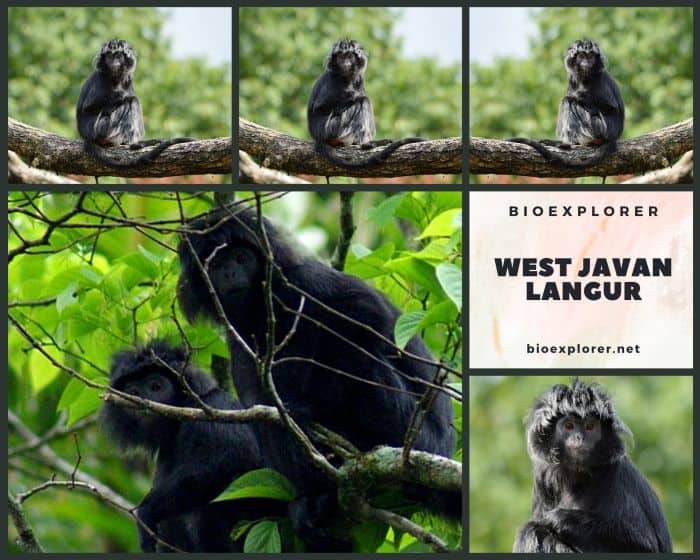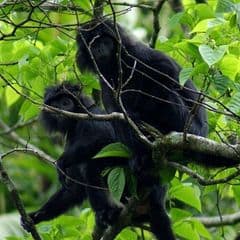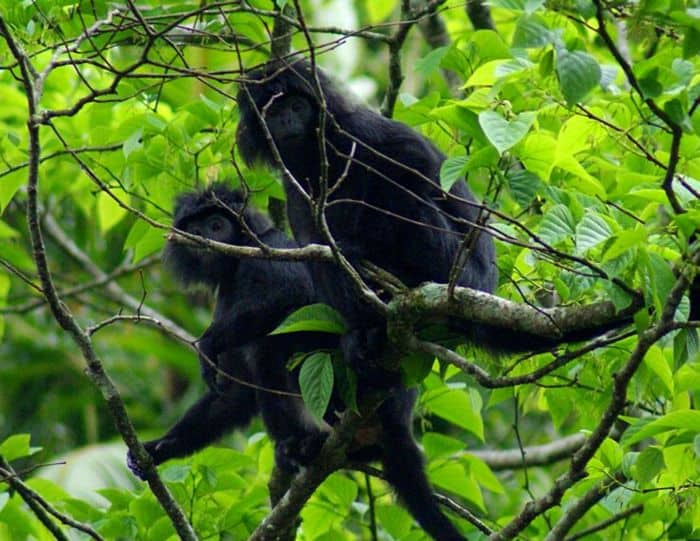
| Animalia | Primates | Cercopithecidae | Trachypithecus | Trachypithecus mauritius |


- Common Name: West Javan Langur
- Taxonomy Classification Year: 1821
- Monkey Size: 44 to 65 cm (17.32 to 25.59 in)
- Skin Color(s): Glossy black
- Habitat: Forest, rainforest, mountains
- Diet: Omnivorous
- Native Countries: Indonesia
West Javan Langur Distribution
West Javan Langur Characteristics

The West Javan langur[1] (Trachypithecus mauritius) is an Old-World monkey of the Colobinae subfamily.
- It was previously considered a subspecies of Trachypithecus auratus until Roos and Groves raised it to its own species. Its range is limited to the island of Java west of Jakarta.
- West Javan langurs have shiny black hair over most of their bodies, fading to dark brown on their legs and belly.
- Their hair extends in all directions around their face giving them the appearance of having beards, long sideburns, and bangs.
- Like other langurs, they have a very long tail than their body. Babies are born with bright orange fur that darkens to black with age.
- Females have yellow pubic spots; this and a slight difference in overall size is the only form of sexual dimorphism exhibited by the West Javan langurs.
West Javan Langur Facts
- Studies suggest that the bright orange color of babies is an evolved trait that helps females in a group recognize an individual in need of attention. In addition, the bright colors of baby hair trigger parental instincts in adults, ensuring that the group’s youngest and most vulnerable members are protected and cared for.
- West Javan langurs communicate acoustically with an alarm call described as “ghek-ghok-ghek-ghok“.
- These langurs typically live in groups consisting of one or two males, usually 5 or 6 females. However, there may be as many as 20 females in a group.
- Adults spend more than half of the day resting (61 percent, according to one study), longer than most frugivorous primates.
- They have hollowed-out stomachs that help them break down plant matter that would otherwise be difficult to digest.
Suggested Reading: Monkey Species List
Cite This Page
APA7MLA8Chicago
BioExplorer.net. (2025, May 28). West Javan Langur. Bio Explorer. https://www.bioexplorer.net/animals/mammals/monkeys/west-javan-langur/.
BioExplorer.net. "West Javan Langur" Bio Explorer, 28 May 2025, https://www.bioexplorer.net/animals/mammals/monkeys/west-javan-langur/.
BioExplorer.net. "West Javan Langur" Bio Explorer, May 28 2025. https://www.bioexplorer.net/animals/mammals/monkeys/west-javan-langur/.











